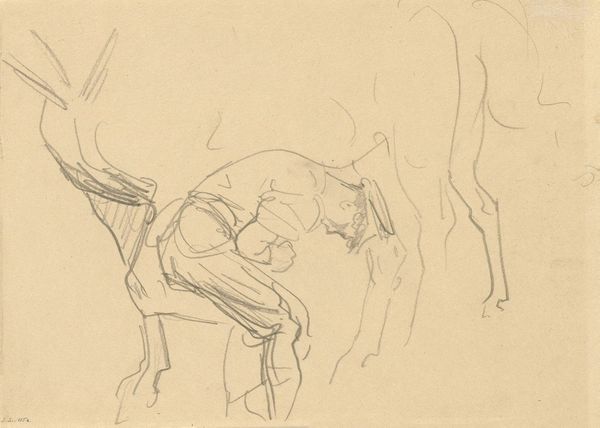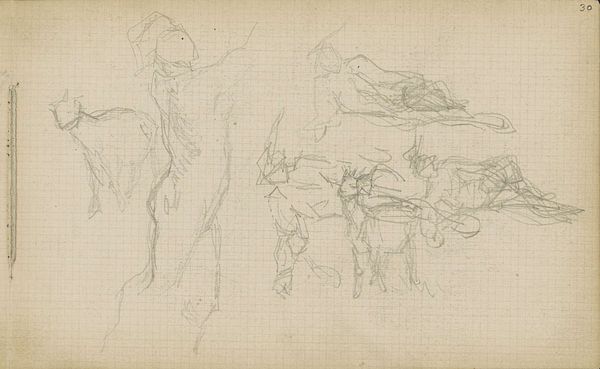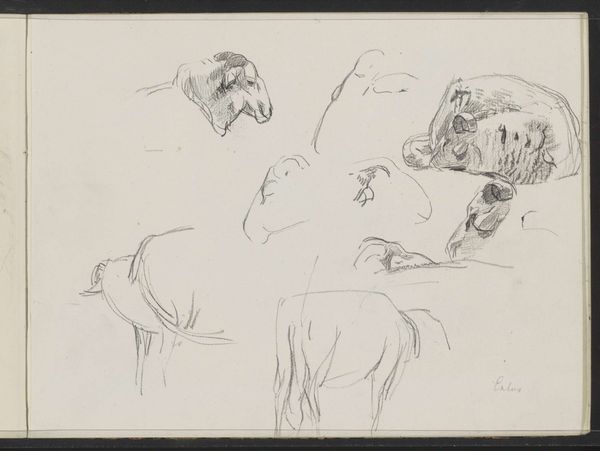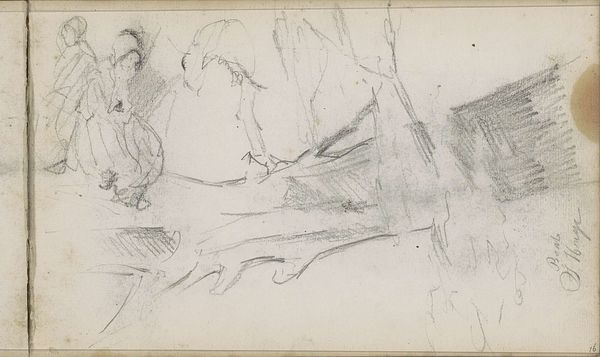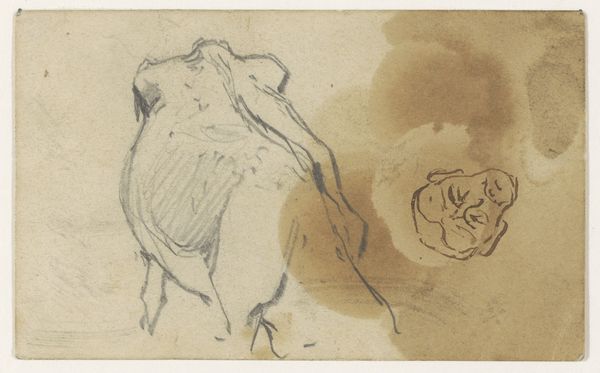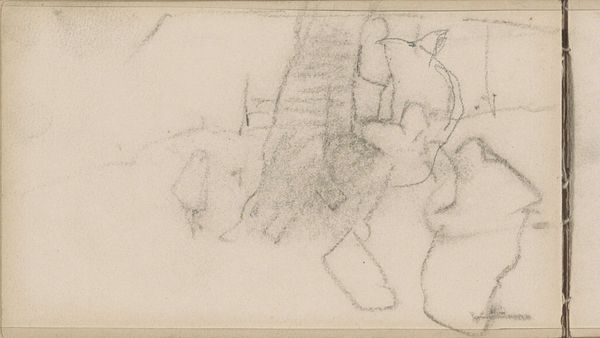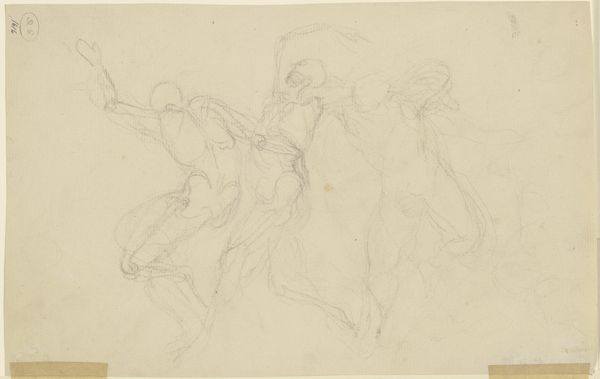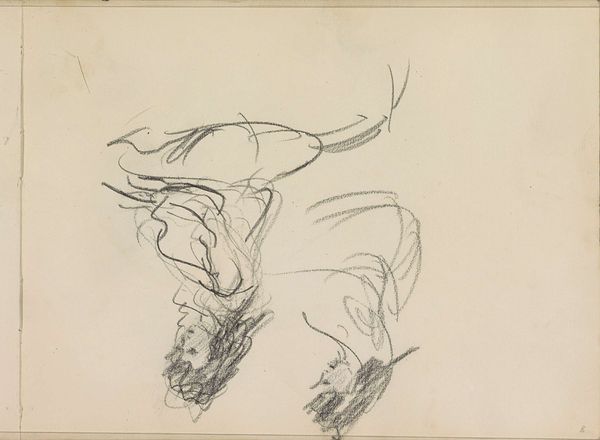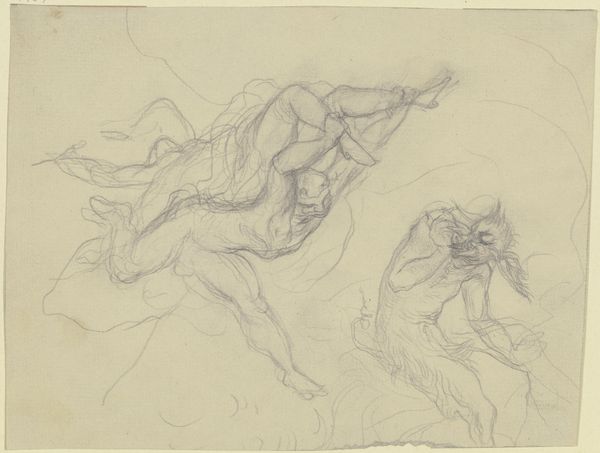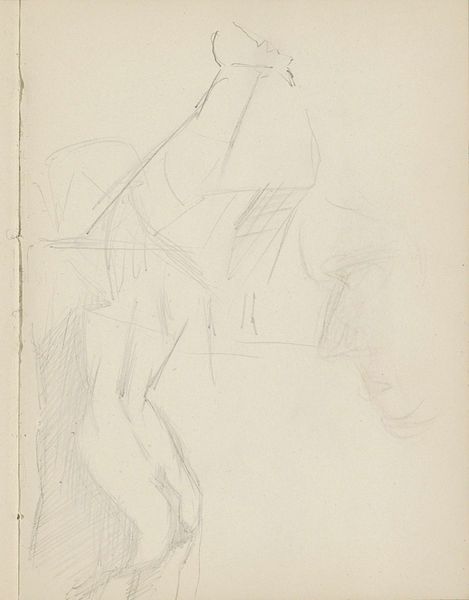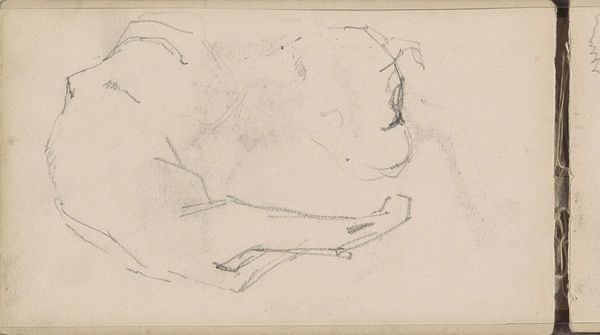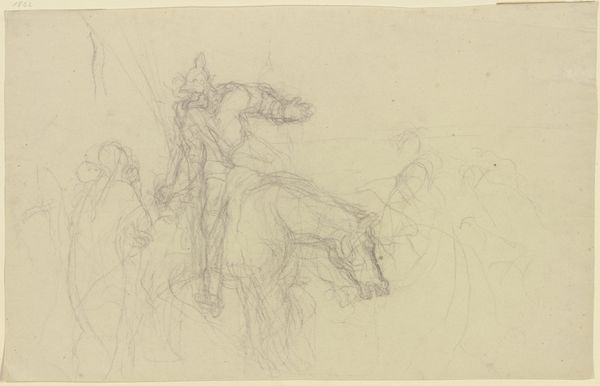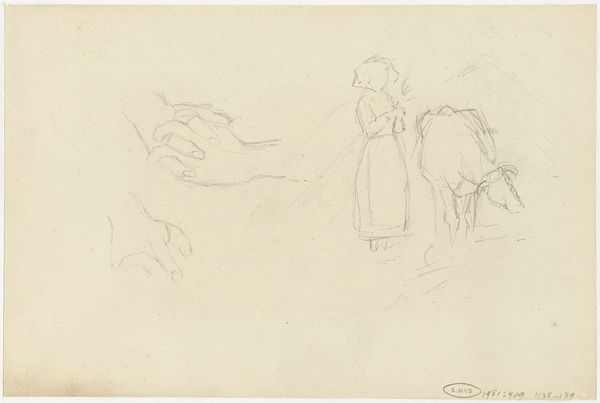
drawing, pencil
#
drawing
#
impressionism
#
landscape
#
figuration
#
pencil
Copyright: Public Domain: Artvee
Curator: Immediately, I'm struck by the dynamic energy of this piece, despite it just being a sketch. The figures are so lively. Editor: Indeed! Before us is Paul Cézanne's "Women Bathers and a Roll of Paper," dating from 1882 to 1885. This intriguing pencil drawing provides a glimpse into Cézanne’s exploration of form and the female nude within landscape settings. It serves as a fascinating insight into the gendered conventions and male gaze of the 19th century art world. Curator: You know, it's interesting how raw and unfinished it feels, which emphasizes its modernity. It breaks with classical notions of idealised beauty. The pencil lines create volume, not by shading but by the pure directionality and weight. It’s almost like he is diagramming form here. Editor: Precisely. We are witnessing a proto-cubist approach even in these early stages. He deconstructs the forms with line alone. And I see an allusion to the "paper" in its title which represents a self-aware gesture on behalf of Cézanne himself. Curator: That's a sharp reading. In the context of late 19th century art—dominated by academic conventions and a prevailing male viewpoint— Cézanne presents an innovative study of the female body, less as an object of visual pleasure and more as a compositional challenge. It almost challenges those notions of women's art and subject matter in particular. Editor: It definitely invites us to deconstruct artistic authority. Cézanne's preparatory process itself questions the accepted role of women and creativity. And so much lies in that unfinished quality. What at first may seem crude can been read as actively rejecting the smooth, hyper-finished styles of the salon. Curator: This has offered a potent and important dialogue about gender in the visual arts! Editor: I agree, this Cézanne work really asks the observer to bring their own subjectivity to bare. It makes them actively reflect on art itself!
Comments
No comments
Be the first to comment and join the conversation on the ultimate creative platform.
